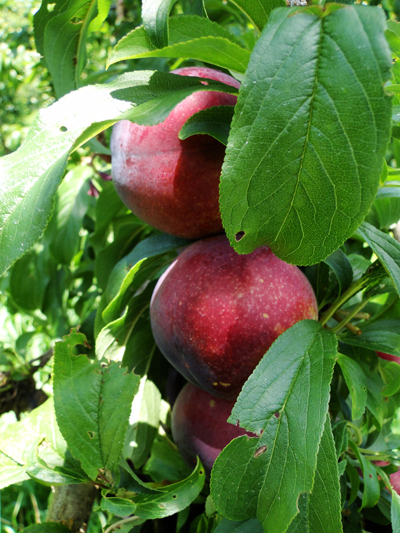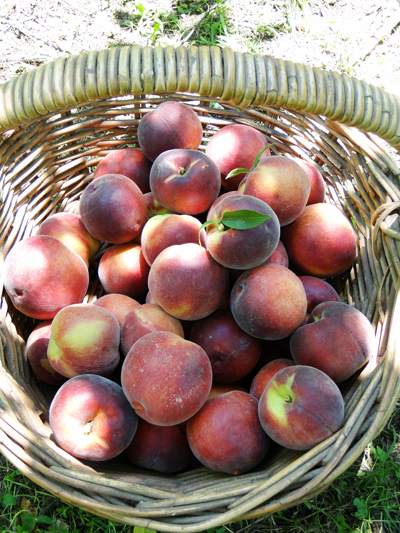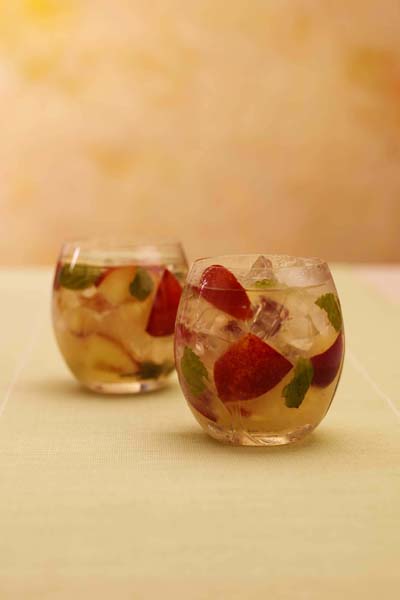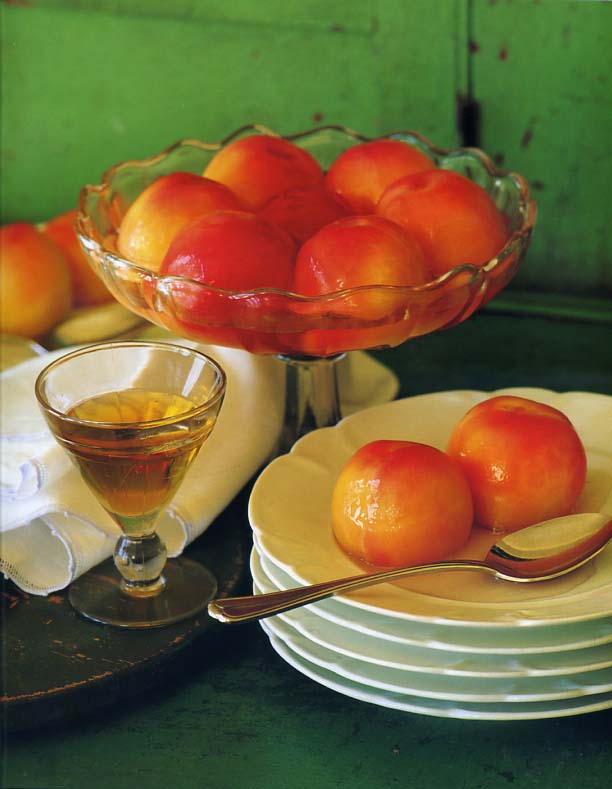Stoned on Fruit
Their fragrance alone is enough to make you swoon. And if that doesn’t do the job, the taste surely will.
“For the taste of the fruit is the tongue’s dream”, exclaimed the American poet Erica Jong.
Surrounded by such summer beauty, who wouldn’t be ecstatic? Now is the time to savour these fruits – and savour, in its full meaning, is the word.
There’s the charming delicacy of the white clingstone peach, Fragar; the sumptuous richness of the Red Gold nectarine, to mention just a couple. And did you know the nectarine is supposed to be named after nectar, the drink of the gods.

Heavenly peaches
They’re at their best, eaten fresh and as I mention in The Cook’s Garden, they also make lovely gifts, placed in a basket, wrapped in cellophane and tied with a bow.

Freshly picked peaches
Of all the stone fruits, the peach is the one I love most. The others – nectarines, apricots, plums and cherries – come a close second because I adore all the stone fruits. I recall an instagram post by chef Perry Hill of Bather’s Pavilion where he wrote “having a simple bowl of stone fruits in the house has special meaning for me. Growing up we didn’t have a lot of money, you could say we were poor but wealthy in other ways, certainly we couldn’t afford stone fruit. As a kid I would always look in the fruit shops and wonder what they tasted like. One day my mother found a $20 note lying in the street unclaimed, my mother said what should we buy as a treat, stone fruit I yelled, they were amazing and I still remember that experience every time I shop for them.”

Nectarine Nectar
Stone fruits belong to the rose family and, like the rose, are fragile and must be handled with care. Ideally, peaches and nectarines (which are smooth, plum-skinned varieties of the peach) should be eaten fresh from the tree and not tampered with, though few of us have that luxury.
“If you eat a Fragar picked straight from the tree, you’d never eat anything else,” says Bob Wickson, program leader of Deciduous Fruits, NSW Agricultrure, Bathurst, and secretary fo the Australian Fresh Stoned Fruit Growers Association.
He points out that growers often pick the fruit too early to ensure they travel well, but that this affects the development of full flavour.

The delicate Fragar
“Consumers have to start demanding fruit picked at the right maturity,” he adds.
Not all stone fruit, however, is best eaten straight from the tree. Some, like the Damson and the Santa Fosa plums, are very tart and can be put to better use in jams, preserves or cheeses (a paste made with fruit and sugar). It’s a good idea to taste before you buy, though most shopkeepers won’t let you do this. Cooking plums, as distinct from dessert plums, are usually too sour to eat raw.
It would be helpful for the consumer if varieties were labeled and a little information given about them, not just a price per kilo.
Fortunately, the industry is about to start its own funding of research and promotion, the aim of which is to find out what consumers want and to tell them what to look for. Sturdy yellow Golden Queen peaches, used mostly for canning, are a very different proposition from the delicate clingstone Fragar and are different again from the freestone yellow J.H. Hale and Redhaven.
There are so many varieties available these days that even the growers find it hard to keep up. Can you tell the difference when you go shopping?

Poached Peaches (from my “Seasonal Entertaining” book), originally photographed at Bather’s Pavilion
